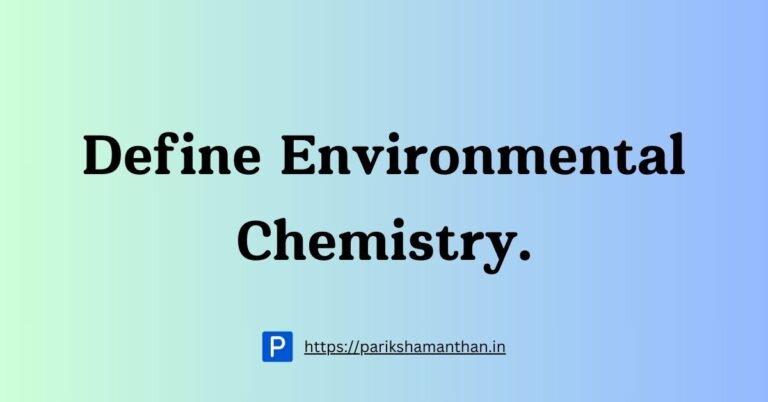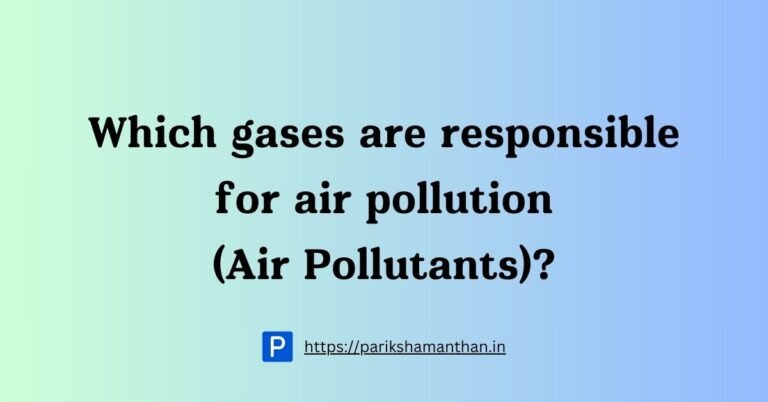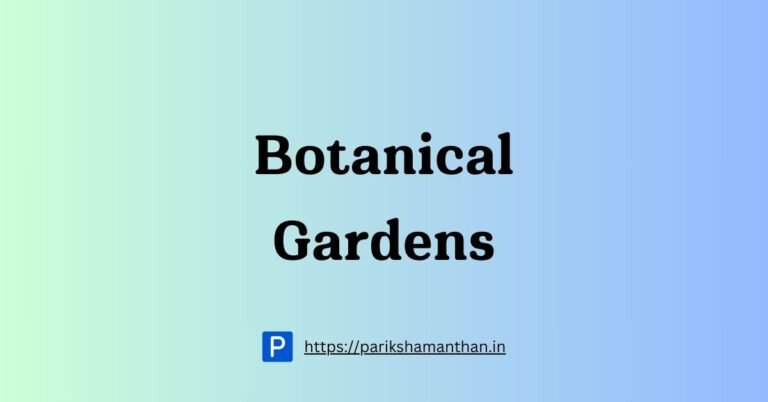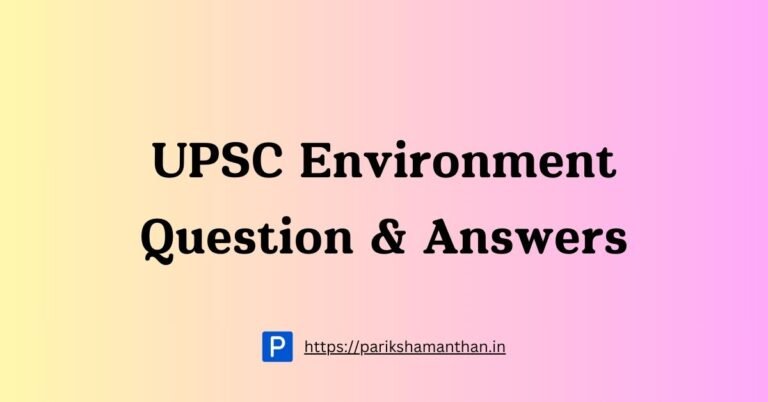Here is the complete guide for ‘What is Ex Situ and In Situ Conservation of biodiversity’, lets get started. Conservation of biological diversity is crucial for maintaining essential ecological diversity and preserving the continuity of food chains. There are two modes of Conservation of biodiversity as follows:
Modes of Conservation:
(a) Ex-situ Conservation: Involves protecting threatened species outside their natural habitat, e.g., zoos, botanical gardens, and seed banks.
(b) In-situ Conservation: On-site conservation within natural populations of plant or animal species, e.g., national parks, sanctuaries, and reserved forests.
Table of Contents
What is Ex Situ and In Situ Conservation
What is In Situ Conservation:
In-situ conservation is the approach of protecting genetic resources (an endangered plant or animal species) within its natural habitat. In India, diverse and ecologically significant areas receive legal protection as Biosphere Reserves, National Parks, Sanctuaries, Reserved Forests, Protected Forests, and Nature Reserves, each offering varying degrees of safeguarding.
These designated areas serve as sanctuaries for indigenous flora and fauna, ensuring the preservation of biodiversity within their native ecosystems. The legal framework provides degrees of protection, acknowledging the unique ecological significance of each region.
| Types of In Situ Conservation | Description |
|---|---|
| Biosphere Reserves | Extensive areas designated for the conservation of ecosystems, promoting sustainable development. |
| National Parks | Dedicated areas with strict conservation measures, emphasizing the preservation of wildlife. |
| Sanctuaries | Protected zones for specific species, allowing minimal human interference. |
| Reserved Forests | Forest areas with restricted access, ensuring sustainable resource use. |
| Protected Forests | Forests under legal protection to conserve biodiversity and ecological balance. |
| Nature Reserves | Areas safeguarded for the conservation of natural features, including landscapes and ecosystems. |
In-situ conservation aims to maintain the delicate balance of nature, allowing species to thrive in their native environments. This approach recognizes the intrinsic value of preserving biodiversity within its natural context, contributing to the overall health and resilience of ecosystems. India now has 18 Biosphere Reserves, 104 National Parks and more than 500 Wildlife Sanctuaries.
- Policy Framework: The National Board for Wildlife (NBWL), chaired by the Prime Minister of India, provides a policy framework for wildlife conservation in the country.
- National Wildlife Action Plan: The National Wildlife Action Plan (2002-2016), adopted in 2002, emphasizes people’s participation and their support for wildlife conservation.

Here are some key aspects of in-situ conservation:
- Protecting habitats: This forms the cornerstone of in-situ conservation. It involves establishing protected areas like national parks, wildlife sanctuaries, and marine reserves. These areas are shielded from harmful human activities like deforestation, pollution, and overexploitation, allowing natural ecosystems to thrive.
Regulations in Protected Areas: In the hierarchy of protection, the level of safeguarding for natural areas in India follows the order: National Parks, Wildlife Sanctuaries, Reserved Forests, and Protected Forests. Plantation, cultivation, grazing, felling trees, hunting, and poaching are prohibited in biosphere reserves, national parks, and wildlife sanctuaries. National Parks typically have the highest level of protection, followed by Wildlife Sanctuaries, Reserved Forests, and Protected Forests. This hierarchy reflects varying degrees of restrictions and regulations on human activities within these designated areas. Therefore in terms of protection, this is the decreasing order: National Parks > Wildlife Sanctuaries > Reserved Forests > Protected Forests.
- Species conservation: In-situ conservation also focuses on specific species, particularly those threatened by extinction. This might involve captive breeding programs for critically endangered animals, habitat restoration for migratory birds, or anti-poaching patrols to protect vulnerable populations.
- Community involvement: Local communities play a crucial role in in-situ conservation. By empowering them as stewards of their natural heritage, fostering sustainable resource use, and providing alternative livelihoods, we can build long-term support for conservation efforts.
In Situ Conservation Advantages And Disadvantages
Advantages of In-situ Conservation:
Preservation of Natural Ecosystems:
- Protects entire ecosystems and their natural dynamics.
- Maintains the intricate balance of interactions among species and their environment.
- Preserves ecosystem services: Healthy ecosystems provide us with clean air, water, fertile soil, and pollination, all essential for our well-being. In-situ conservation safeguards these vital services.
Genetic Adaptation and Evolution:
- Facilitates natural selection and genetic adaptation to changing environmental conditions.
- Allows for the evolutionary processes that contribute to species resilience.
Maintaining Ecological Balance:
- Preserves biodiversity within its ecological context.
- Ensures the continuation of ecological processes such as pollination, seed dispersal, and nutrient cycling.
Maintains biodiversity: A diverse range of species is crucial for the health and resilience of ecosystems. In-situ conservation protects this diversity, ensuring the long-term survival of countless species.
Conservation of Keystone Species:
- Protects species crucial to the functioning of ecosystems (keystone species).
- Safeguards the stability and health of entire ecological communities.
Supports Native Flora and Fauna:
- Ensures the survival and propagation of native plant and animal species.
- Facilitates the natural regeneration of populations.
Promotes Sustainable Land Use:
- Encourages sustainable practices in land use and resource management.
- Balances conservation with human activities to meet present and future needs.
Cultural and Aesthetic Value:
- Preserves landscapes and natural environments that hold cultural significance.
- Provides opportunities for recreational and aesthetic enjoyment.
Economic Benefits:
- Supports ecosystem services such as water purification, soil fertility, and climate regulation.
- Contributes to sustainable resource use, benefiting local communities economically.
- Boosts local economies: Protected areas often attract tourism, generating income for local communities and supporting sustainable livelihoods.
Adaptation to Climate Change:
- Enables species to adapt naturally to climate change.
- Preserves diverse genetic material that may hold traits vital for adaptation.
- Combats climate change: Forests and other natural ecosystems play a vital role in sequestering carbon dioxide, mitigating the effects of climate change. In-situ conservation helps protect these carbon sinks.
Legal Protection and Monitoring:
- Provides legal protection through designations like national parks and reserves.
- Facilitates monitoring and research to assess the health and status of ecosystems.
In-situ conservation serves as a cornerstone for biodiversity preservation by prioritizing the protection of species and ecosystems within their natural habitats.
Disadvantages of In Situ Conservation:
While in situ conservation (on-site conservation of genetic resources in their natural habitats) has several advantages, there are also potential disadvantages:
- Habitat Degradation: The very habitats meant for conservation can face degradation due to human activities, climate change, or natural disasters. This can threaten the well-being of the species intended for conservation.
- Limited Control: Conservationists have limited control over external factors that affect the habitat. Pollution, deforestation, or changes in land use outside protected areas can still impact the species despite conservation efforts.
- Conflict with Human Activities: In some cases, conservation efforts may conflict with local human activities such as agriculture, logging, or infrastructure development. This can lead to tensions between conservation goals and the needs of local communities.
- Invasive Species: Invasive species can pose a threat to native biodiversity within protected areas. They may outcompete native species for resources and disrupt the natural balance of the ecosystem.
- Climate Change: In situ conservation may not be sufficient to protect species from the impacts of climate change. Rapid changes in temperature, precipitation, or sea levels can alter habitats faster than species can adapt.
- Disease Spread: In natural habitats, the spread of diseases among wildlife can occur, affecting the health of populations. Disease outbreaks can have significant consequences for conservation efforts.
- Resource Limitations: Limited resources, both in terms of funding and personnel, may constrain effective in situ conservation. Insufficient resources can hinder monitoring, protection, and management efforts.
- Single-Species Focus: Conservation efforts may sometimes focus on individual flagship species, neglecting the overall ecosystem health. This narrow focus may not address the holistic needs of the entire ecosystem.
- Lack of Genetic Diversity: Small and isolated populations within a habitat may suffer from reduced genetic diversity, making them more vulnerable to diseases, environmental changes, or inbreeding depression.
- Slow Recovery: Ecosystems take time to recover from disturbances. Even with conservation measures in place, the recovery of habitats and populations may be slow.
It’s important to note that while these are potential disadvantages, in situ conservation remains a crucial approach for maintaining the diversity of life on Earth. Conservation strategies often involve a combination of in situ and ex situ approaches to address these challenges comprehensively.
PRACTICE QUESTIONS
Question 1: Which one of the following is not a method of In-situ Conservation of Biodiversity?
(a) Biosphere Reserve
(b) Wildlife Sanctuary
(c) Botanical Garden
(d) Sacred Groves
Answer: The correct answer is (c). Botanical Garden.
Question 2: Consider the following:
(a) Establishing and managing national parks
(b) Implementing sustainable resource management practices within protected areas
(c) Captive breeding programs for critically endangered species outside their natural habitat
(d) Community-based conservation initiatives that promote responsible use of natural resources
(e) Habitat restoration projects to improve the quality of existing ecosystems
Which is NOT included under in-situ conservation of biodiversity?
A. a, b, d
B. d, e
C. a, b, c, d
D. c only
E. All of the above
Answer: The correct answer is (D) Captive breeding programs for critically endangered species outside their natural habitat
In-situ conservation focuses on protecting biodiversity within its natural habitat. Captive breeding programs, while valuable for population recovery, fall under ex-situ conservation, which involves conserving biodiversity outside its natural range.
(a), (b), (d), and (e): All directly contribute to the protection and management of biodiversity within its natural habitat, making them fall under in-situ conservation.
Question 3: Which one of the following is not a site for in-situ method of conservation of flora?
(a) Biosphere Reserves
(b) Botanical Garden
(c) National Park
(d) Wildlife Sanctuary
Answer: The correct answer is (b) Botanical Garden.
What is Ex Situ Conservation:
Ex situ conservation involves safeguarding endangered plants and animals outside their natural homes, often in controlled environments. Ex Situ conservation includes: Zoological Parks, Botanical Gardens, Wildlife Safari Parks, and Seed Banks.
- Zoological Parks: Originally for entertainment, modern zoos now play crucial roles in wildlife conservation and education. Many extinct-in-the-wild species are maintained here, often through captive breeding programs.
- Botanical Gardens: These gardens protect endangered plant species, enabling research and public awareness. They contribute to plant diversity preservation through methods like tissue culture.
- Wildlife Safari Parks: Offering a more natural setting than traditional zoos, these parks focus on preserving and showcasing wildlife in expansive, semi-natural environments.
- Seed Banks: These banks store seeds of diverse plant species, ensuring genetic diversity preservation. For instance, the National Gene Bank in Delhi conserves unique plant accessions for long-term sustainability.
Advancements in Ex-situ Conservation:
Recent progress includes cryopreservation techniques for preserving gametes in viable conditions. This allows for the long-term conservation of genetic material, ensuring the fertility of endangered species. In vitro fertilization of eggs and tissue culture methods contribute to the propagation of threatened plants.
| Technique | Description |
|---|---|
| Cryopreservation | Preserving gametes at extremely low temperatures for extended periods. |
| In Vitro Fertilization | Fertilizing eggs outside the organism in a controlled environment. |
| Tissue Culture | Propagating plants from small plant parts under sterile conditions. |
| Artificial Insemination | Sperm from a suitable male is used to artificially impregnate a female, even in different locations globally. |
| Embryo Transfer | Fertility drugs induce a rare species female to produce multiple eggs. Some are fertilized and implanted into a related but less rare species, resulting in offspring of the rare species. |
| Hormone Patches for Birds | Endangered birds stimulated for reproduction using hormone patches attached under the wing. |
Ex situ conservation complements in situ efforts, offering a safety net against species loss and supporting research for sustainable biodiversity.
Ex Situ Conservation Advantages and Disadvantages:
Advantages of Ex-situ Conservation:
Genetic Diversity Preservation:
- Enables the preservation of genetic diversity outside natural habitats.
- Safeguards unique traits and variations of threatened species.
Species Recovery and Breeding:
- Facilitates captive breeding programs for endangered species.
- Aids in the recovery and population management of threatened plants and animals.
Research and Education:
- Provides opportunities for scientific research on species behavior, biology, and ecology.
- Serves as educational resources, fostering public awareness and environmental education.
Conservation of Extinct Species:
- Allows for the conservation of species that have become extinct in the wild.
- Zoos and botanical gardens play a role in preserving species for potential reintroduction.
Emergency Response to Threats:
- Serves as a safety net for species facing immediate threats in their natural habitats.
- Provides a secure environment for species during times of environmental crisis.
Crop Diversity Conservation:
- Preserves diverse genetic strains of commercially important plants in seed banks.
- Ensures a repository for future agricultural needs and potential breeding programs.
Long-Term Preservation:
- Cryopreservation techniques enable the storage of gametes and seeds for extended periods.
- Ensures the long-term conservation of genetic material for future generations.
In Vitro Fertilization and Tissue Culture:
- Allows for in vitro fertilization of eggs and tissue culture propagation of plants.
- Enhances the chances of successful reproduction and propagation of threatened species.
Ex-situ conservation measures contribute to biodiversity conservation by offering alternatives for the protection and management of endangered species, complementing in-situ conservation efforts.
Disadvantages of Ex-situ Conservation:
Ex-situ conservation, involving the preservation of biodiversity outside its natural habitat, comes with its own set of disadvantages:
- Loss of Genetic Adaptations: Species kept in controlled environments may lose their natural adaptations to specific ecological conditions over time, making them less fit for survival in the wild.
- Stress and Behavioral Changes: Captive environments can induce stress and behavioral changes in animals, affecting their overall well-being. This can lead to health issues and reduced reproductive success.
- Limited Space: Facilities like zoos and botanical gardens often have limited space, hindering the ability to create environments that mimic the natural habitats of diverse species adequately.
- High Costs: Maintaining ex-situ facilities, including the provision of proper care, veterinary services, and suitable living conditions, requires significant financial resources. High costs may limit the number of species that can be effectively conserved.
- Dependency on Human Care: Species in captivity may become dependent on human care for their survival. This reliance can compromise their ability to fend for themselves if reintroduced into the wild.
- Artificial Selection: Selective breeding in captive populations may unintentionally alter the genetic diversity and fitness of species, affecting their ability to adapt to changing environmental conditions.
- Limited Species Representation: Ex-situ facilities may not be able to accommodate all species and genetic diversity present in natural habitats, leading to a biased representation of biodiversity.
- Ethical Concerns: Keeping animals in captivity raises ethical concerns related to their freedom, natural behaviors, and overall welfare. Balancing conservation goals with ethical considerations is a constant challenge.
- Inadequate Reintroduction Success: Reintroducing captive-bred individuals into the wild may not always result in successful population establishment. Factors such as habitat suitability, predation, and competition can impede reintroduction success.
- Disease Transmission: The close confinement of individuals in ex-situ facilities increases the risk of disease transmission among captive populations. Disease outbreaks can have devastating effects on the health of the conserved species.
- Limited Conservation Scope: Ex-situ conservation may not address the root causes of threats to species in their natural habitats, such as habitat destruction, pollution, or climate change.
Despite these challenges, ex-situ conservation plays a crucial role in complementing in situ efforts. A balanced and integrated approach that combines both in situ and ex situ strategies is often necessary for comprehensive biodiversity conservation.
Distinguish Between In Situ And Ex Situ Conservation (Compare In Situ And Ex Situ Conservation):
| Aspect | In-Situ Conservation | Ex-Situ Conservation |
|---|---|---|
| Location | On-site, within the natural habitat of the species. | Off-site, outside the natural habitat, often in controlled environments. |
| Scope | Conservation within entire ecosystems and landscapes. | Focused on individual species or populations in controlled settings. |
| Conservation Unit | Preserves entire populations, including genes and interactions. | Focuses on preserving individuals, gametes, seeds, or tissues. |
| Examples | National parks, biosphere reserves, wildlife sanctuaries. | Zoos, botanical gardens, seed banks, captive breeding programs. |
| Genetic Diversity | Maintains natural genetic diversity and evolutionary processes. | Captures a snapshot of genetic diversity but may lack natural selection. |
| Ecological Processes | Allows for natural ecological processes to continue. | May require artificial interventions to simulate ecological interactions. |
| Biodiversity Conservation | Integral to the conservation of biodiversity and ecosystems. | Targets specific species, often those facing a higher risk of extinction. |
| Habitat Preservation | Preserves entire habitats and associated biodiversity. | Offers controlled environments, but not the full complexity of ecosystems. |
| Adaptation to Change | Facilitates natural adaptation to changing environmental conditions. | May lack the ability for natural adaptation, requiring human intervention. |
| Economic Considerations | Balances conservation with sustainable land use and local needs. | May involve higher costs for maintaining controlled environments and care. |
| Cultural and Aesthetic Value | Preserves landscapes with cultural and aesthetic significance. | Provides opportunities for public education and awareness. |
In-situ and ex-situ conservation are complementary approaches, each contributing to the overall conservation of biodiversity, with in-situ conservation focusing on maintaining species within their natural ecosystems, and ex-situ conservation providing a safeguard against potential extinctions through managed settings.
📝 In Situ And Ex Situ Conservation Of Biodiversity Pdf – Click Here to Download PDF







